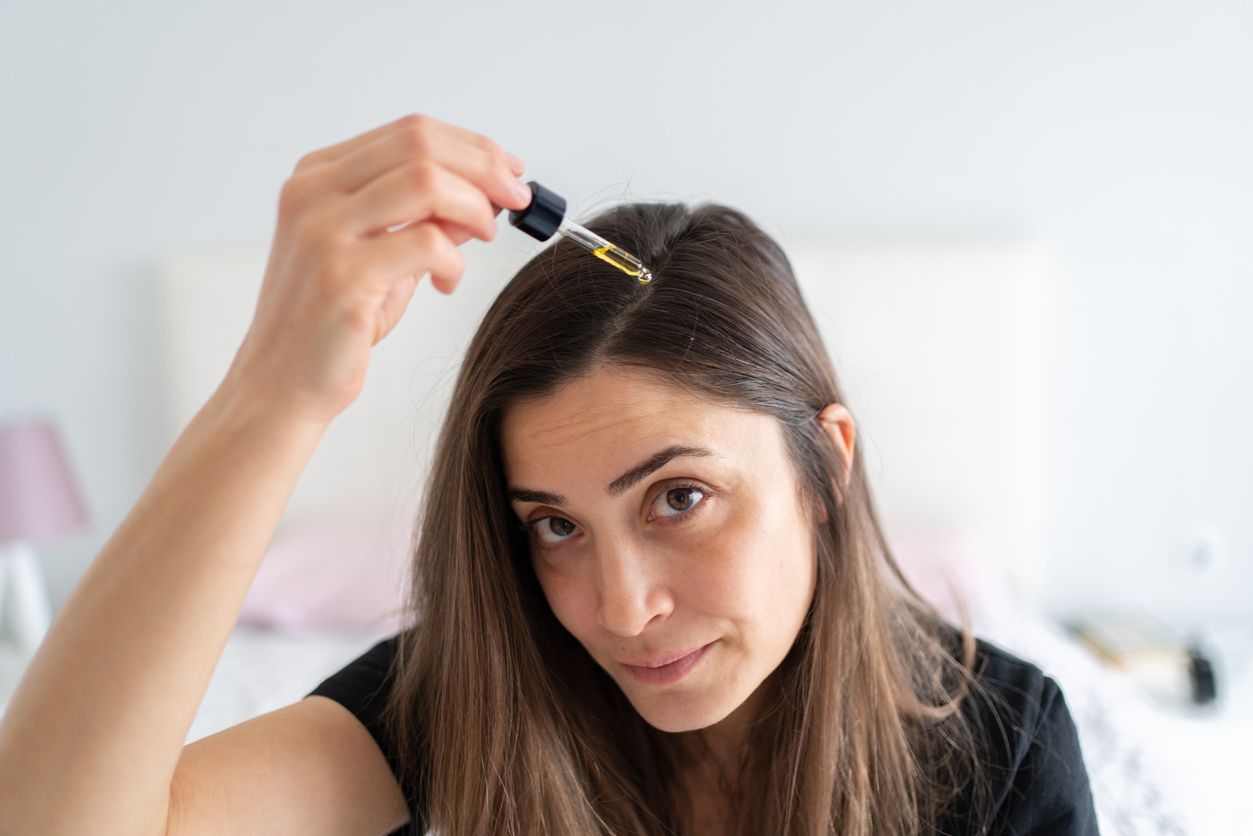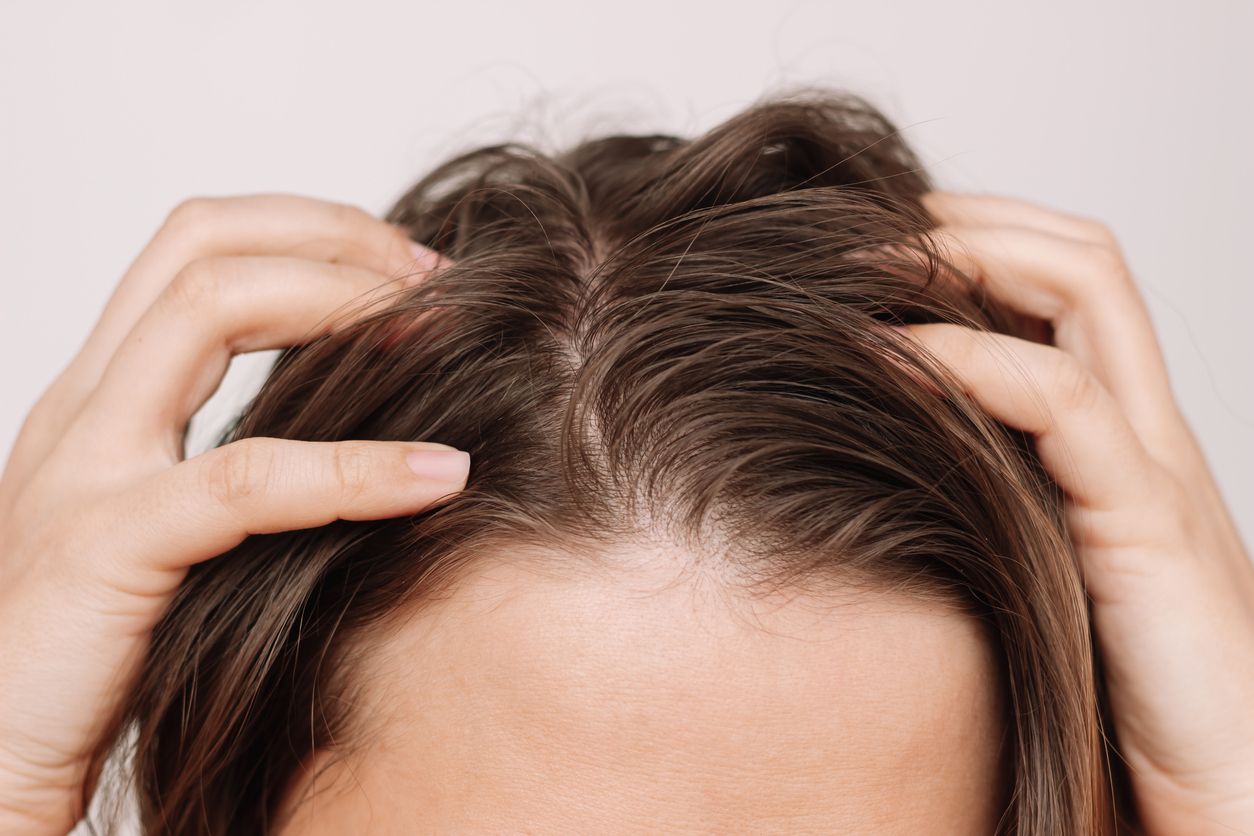
Author: Natalie Ng|Updated: 7 May 2025
Scalp oils can do a lot for your hair — but only if you use them right. They help soften hair, soothe a dry scalp, and support healthy growth. From rosemary oil and castor oil to lighter options like grapeseed or jojoba, each one brings something different to the table. But even with the best ingredients, small mistakes can get in the way. Using too much, applying to dirty hair, or picking the wrong oil for your hair type can all cause problems like buildup or clogged follicles. Whether you’re working with fine hair, dealing with an inflamed scalp, or trying to grow back thinning hair, the way you apply oil matters just as much as the product itself. Want to avoid the most common errors and get better results from your hair oil routine? Keep reading — it only takes a few changes to make a big difference.

Common Mistakes When Using Scalp Oils:

Whether you’re working with fine hair, dealing with an inflamed scalp, or trying to grow back thinning hair, the way you apply oil matters just as much as the product itself. Want to avoid the most common errors and get better results from your hair oil routine? Keep reading — it only takes a few changes to make a big difference.

1. Overloading Your Scalp With Product

Using too much oil does more harm than good
Applying more scalp oil than your scalp needs can backfire. It’s easy to think that soaking your scalp will lead to softer hair or faster hair growth, but heavy application often clogs the hair follicles. This can lead to excess oil buildup, scalp irritation, or even a flaky scalp that feels itchy and uncomfortable.
Stick to a small amount
Start with just a few drops — usually one to three drops is enough, especially for very fine hair or thinner hair types. Focus the oil on targeted areas that need attention rather than covering the entire scalp. Use your fingertips to apply the oil directly, working through each section gently. This helps distribute the product evenly without drowning your scalp.
Watch how your hair reacts
If your hair feels greasy soon after washing, looks limp, or seems heavy near the roots, you may be using too much oil. Scalp oils like rosemary oil, castor oil, or avocado oil are concentrated — more is not better. A lightweight formula or carrier oil like grapeseed oil or jojoba oil may work better if your hair texture is fine or prone to oiliness.
Keeping things light helps protect the hair shaft, support scalp health, and avoid problems like product buildup. Using the right amount allows essential oils to do their job without disrupting your scalp’s natural balance.
Book Now to Experience
F8 Hair Regrowth Treatment
1 Minute Self-Registration
Date should not be before minimal date

2. Applying Oil to Dirty Hair
Dirty hair blocks the benefits of scalp oils
Applying scalp oils like rosemary oil, tea tree oil, or sweet almond oil to unwashed hair doesn’t help absorption — it actually does the opposite. When your scalp is coated with sebum, sweat, or styling product residue, adding oil traps all of that debris in place. This can clog the hair follicles, create buildup, and affect scalp health. Over time, that buildup may irritate the skin or even contribute to hair thinning.
Clean scalp, better results
Starting with freshly washed hair gives scalp oils a clean surface to work with. A clean scalp allows the oil’s nutrients — including essential fatty acids and key ingredients like amino acids or plant based oils — to sink in where they’re needed. Whether you’re using coconut oil to soften hair or jojoba oil to calm a dry scalp, applying it to clean skin ensures better absorption and less risk of clogged pores.
Wash first, oil after
Your best bet is to wash your hair before oiling. Once your scalp is clean and damp, apply a few drops directly to the roots or areas that need support. This simple change helps reduce the risk of an inflamed scalp or flaky scalp, and allows oils like avocado oil or rosemary mint scalp formulas to work more effectively — whether your goal is stronger hair, scalp repair, or reduced hair loss.

3. Skipping the Pre-Oil Scalp Massage
Massage helps oils work better
Before you apply any scalp oil, take a few minutes to massage your scalp with clean, dry fingertips. This simple step boosts circulation and helps your scalp prepare to absorb oils more effectively. Skipping this part can make your routine less effective, even if you’re using high-quality options like castor oil or lavender oil.
Importance of circulation
Massaging the scalp stimulates blood flow to the hair follicles. This brings more oxygen and nutrients to the roots, which supports hair growth and can even help with thinning hair over time. Regular massage also helps distribute your scalp’s natural oils, loosens any buildup near the scalp, and relaxes tension — especially useful if you're dealing with an inflamed scalp or dry patches.
How to do it right
Use small, circular motions with your fingertips — not your nails — and spend about three to five minutes working across your entire scalp. Focus on areas that feel tight or sore, or where you’ve noticed thinning hair or dry scalp symptoms. You don’t need to add any product at this stage. This step is just about warming up the scalp and getting it ready to absorb oils like peppermint oil, safflower oil, or argan oil more evenly.
A pre-oil massage is a quick way to boost the effects of your treatment. Without it, you might be missing out on one of the easiest ways to improve scalp health.

4. Using the Wrong Oil for Your Hair Type
Not all oils work for every hair type
Choosing the right oil matters. Using something too heavy or too light can leave your scalp feeling greasy or your hair undernourished. Oils vary in weight, absorption, and benefits, so matching them with your hair type and scalp needs is key — especially if you're dealing with very fine hair, dry scalp, or hair thinning.
Match your oil to your hair type
The right oil should support your goals — whether that’s thicker hair, less breakage, or a soothed scalp. Here’s a quick guide:
Fine or very fine hair
Use lightweight options like argan oil or grapeseed oil. These absorb quickly and won’t weigh down your strands. A few drops are enough to soften hair without making it flat or oily.
Medium or normal hair
Jojoba oil or sweet almond oil are great all-rounders. They balance moisture and support scalp health while helping repair dry hair and split ends.
Thick or coarse hair
Coconut oil and castor oil are more nourishing. They coat the hair shaft and help seal in moisture, which is ideal for dry hair or winter months.
Dry or damaged hair
Castor oil, avocado oil, or olive oil are full of essential fatty acids and nutrients that help restore hair strength and repair damage.
Oily scalp or buildup-prone
Stick with lighter oils like grapeseed oil or tea tree oil. These won’t clog the follicles and can help calm an oily scalp or reduce flaking.
Choose based on results, not trends
It’s easy to reach for what’s popular, like rosemary oil for hair growth, but it still needs to suit your hair texture. If your oil leaves your hair looking limp or your scalp feeling itchy, it’s time to try something better suited to your needs. Pairing the right oil with consistent use makes all the difference in your daily routine.
Book Now to Experience
F8 Hair Regrowth Treatment
1 Minute Self-Registration
Date should not be before minimal date

5. Poor Timing and Frequency of Application
Applying oil too often can do more harm than good
Using scalp oils every day might seem like a way to get faster results, but overdoing it can lead to clogged hair follicles, excess oil, and greasy hair that feels heavy or dull. Too much product can throw off your scalp’s natural balance, especially if you're already prone to oily roots or buildup.
Set a schedule that works for your hair
Most hair types respond well to oiling once or twice a week. If your scalp tends to be dry, you might benefit from a slightly more frequent routine. But if you have fine hair, very fine hair, or thinning hair, using oil too often can make your strands feel flat and lifeless. Pay attention to how your scalp and hair feel after each application, and adjust from there.
Apply oil at the right time
The best time to use scalp oil is after washing your hair, while your scalp is clean and slightly damp. This allows the oil to sink in properly and deliver its benefits. Oils like rosemary mint scalp blends, lavender oil, or geranium oil absorb better this way, giving you more out of each treatment.
Avoid applying oil right before bed unless you're doing a specific overnight treatment. Without proper planning, you may end up staining pillowcases or wasting product. If you’re oiling during the day, leave the oil on for 30 to 60 minutes before rinsing or styling. This gives your scalp enough time to absorb the key ingredients without oversaturating the hair shaft.
A consistent routine with the right timing helps improve hair strength and scalp health — and leads to better results with fewer issues.

How to Use Scalp Oils for Healthier, Thicker Hair
Start with the right amount
Using scalp oil doesn’t mean pouring it on. Start with one to three drops — especially if you're working with lightweight options like almond oil or jojoba oil. For thicker oils like castor oil or coconut oil, even less may be needed. Warm the oil slightly between your hands and apply it directly to the scalp using your fingertips.
Apply to a clean, slightly damp scalp
After shampooing, gently towel-dry your hair and apply oil while your scalp is still a little damp. This helps seal in moisture and allows ingredients like rosemary oil, tea tree oil, or peppermint oil to absorb more effectively. These essential oils can support hair growth and soothe issues like dry scalp or flaky scalp.
Focus on the roots
Use your fingers to massage the oil into both the scalp and roots. Avoid soaking your entire head in oil — the goal is to target the scalp, not saturate the hair strands. For dry ends or split ends, you can lightly coat the hair shaft using a few drops of avocado oil, safflower oil, or other plant based oils.
Keep it on for 30 to 60 minutes
Letting oil sit for at least half an hour allows your scalp to absorb key nutrients. For overnight treatments, use a lightweight formula and cover your hair to avoid mess. Rinse thoroughly with a mild shampoo to avoid buildup or a greasy finish.
Rinse and repeat weekly
Make scalp oiling a regular part of your routine. One to two times per week is enough for most hair types. For thinning hair or a dry scalp, you might need to adjust depending on how your scalp reacts.

Which Scalp Oil Is Best for You?
Each scalp oil has different benefits based on your hair texture, scalp condition, and goals. Here’s a quick breakdown:
• For hair growth: Rosemary oil, peppermint oil, castor oil
• For fine hair or very fine hair: Argan oil, grapeseed oil
• For dry scalp or flaky scalp: Tea tree oil, jojoba oil
• For soothing formula needs: Lavender oil, geranium oil
• For split ends and dry strands: Coconut oil, avocado oil
• For general scalp health: Sweet almond oil, olive oil
Whether you’re trying to grow baby hairs, improve hair strength, or prevent hair loss, choosing the right scalp oil — and using it correctly — will support healthier, thicker hair over time.
Book Now to Experience
F8 Hair Regrowth Treatment
1 Minute Self-Registration
Date should not be before minimal date

Why Consistent Scalp Oiling Makes a Difference
Long-term care builds stronger hair
One-off treatments won’t change much — consistent use is what supports visible results. Regular scalp oiling helps nourish hair follicles, improves scalp health, and strengthens the hair shaft over time. Whether you’re using rosemary oil for hair growth or grapeseed oil for a lightweight touch, results depend on routine, not just the product.
Supports moisture and reduces breakage
Plant based oils like coconut oil, almond oil, and jojoba oil help seal in hydration and protect against environmental damage. This is especially helpful during the winter months or if your scalp tends to feel tight and dry. Oiling regularly also helps soften hair and reduce split ends, which supports a smoother texture and less breakage in daily styling.
Helps maintain balance for all hair types
Whether your goal is to treat an inflamed scalp, restore shine to dry hair, or reduce excess oil, the right scalp oil routine helps maintain balance. Essential oils like lavender oil or rosemary mint scalp blends are gentle enough for sensitive skin while still delivering aromatherapy benefits and nutrients like essential fatty acids and amino acids.
Protects your style
If you wear a protective style, such as braids or twists, applying a few drops of oil directly to the scalp can prevent dryness and flaking without disrupting the style. Choose a carrier oil that suits your scalp and hair type, and apply as needed between washes to keep both the scalp and hair strands moisturized.
Sticking to a scalp oil routine isn’t just about fixing issues — it’s about keeping your hair in its best shape through simple, consistent care.

Boost Your Scalp Oil Routine with the F8 Hair Regrowth Treatment
A treatment that supports better absorption and stronger results
If you’re already using scalp oils like rosemary oil, jojoba oil, or castor oil in your hair care routine, pairing them with a professional scalp treatment can take your results further. The F8 Hair Regrowth Treatment is a non-invasive option that works beneath the surface — helping to prepare your scalp so your oils and serums absorb more effectively.
This treatment uses low-energy laser technology to gently stimulate the scalp. The laser boosts blood flow to the hair papilla and strengthens capillaries, which improves nutrient delivery to the hair follicles. It’s safe, non-surgical, and suitable for both ladies and gentlemen experiencing hair thinning, hair loss, or dry scalp issues.
How F8 works step by step
• Step 1: A professional examines your scalp using magnification to assess hair follicle health and determine the treatment areas.
• Step 2: Low-level laser energy is applied evenly across the scalp. This stimulates circulation and energizes dormant hair follicles.
• Step 3: A premium hair growth serum is applied to the scalp. The laser enhances the absorption of the serum, which works to unclog pores, calm excess oil production, and hydrate the scalp.
Why combine F8 with scalp oils?
Scalp oils like tea tree oil, avocado oil, or argan oil work best when your scalp is healthy and balanced. The F8 treatment clears buildup, supports circulation, and creates a clean base — helping your oil treatments penetrate more deeply. Oils applied after the treatment are better absorbed, allowing key ingredients like essential fatty acids and amino acids to work at full strength.
This treatment also supports people with very fine hair or thinning hair, as it helps create the ideal environment for new growth while improving the condition of the scalp over time.
Key benefits of the F8 Hair Regrowth Treatment:
• Non-invasive and gentle for sensitive scalps
• Helps reduce excess oil and manage scalp sebum
• Promotes better serum and scalp oil absorption
• Encourages blood flow and strengthens hair follicles
• Improves hydration for dry scalp and flaky scalp conditions
• No downtime required — fits easily into your weekly routine
If you’re looking to make your scalp oil treatments more effective and support long-term scalp health, the F8 Hair Regrowth Treatment is a smart, supportive step.
Book the F8 Hair Regrowth Treatment today and take your hair care routine to the next level.
F8 Hair Regrowth TreatmentBook Now to Experience
F8 Hair Regrowth Treatment
1 Minute Self-Registration
Date should not be before minimal date
FAQ
1. Can I use scalp oils every day if I have an oily scalp?
Daily use of scalp oils is not recommended for oily scalps. Applying oil too often can lead to clogged hair follicles and excess oil buildup, especially if your scalp already produces sebum naturally. Instead, use a lightweight oil like grapeseed oil or tea tree oil 1–2 times per week to help balance oil production and improve overall scalp health without overwhelming your skin.
2. What’s the difference between essential oils and carrier oils in hair care?
Essential oils are concentrated extracts from plants and must be diluted before use. Examples include rosemary oil, peppermint oil, and lavender oil — these support scalp stimulation, hair growth, and calming effects. Carrier oils like jojoba oil, almond oil, and olive oil are used to dilute essential oils and provide moisture and nourishment. Using both together helps deliver key benefits while protecting the scalp from irritation.
3. Is it better to oil my scalp before or after shampooing?
For most people, applying scalp oil before shampooing is more effective. This allows the oil to break down buildup, hydrate the scalp, and protect the hair strands during the wash. Applying oil after shampooing can be helpful for dry hair ends, but you should avoid applying heavy oils directly to the scalp post-wash, as it can weigh down the hair and attract dirt.
4. Can scalp oils help with postpartum hair loss?
Scalp oils may help support recovery from postpartum hair loss by improving scalp circulation and reducing dryness. Oils rich in nutrients — such as castor oil, rosemary oil, or argan oil — can nourish the scalp and encourage baby hairs to grow back. While these oils don't stop hormonal hair loss, they can create a healthier environment for regrowth when used consistently as part of your hair care routine.
5. What oils are best for people with sensitive or inflamed scalp?
For sensitive or inflamed scalps, choose soothing oils with anti-inflammatory properties. Jojoba oil, lavender oil, and calendula-infused oil (when diluted properly) are gentle options that calm irritation and support healing. Avoid heavy or strongly scented oils, and always do a patch test first. Look for a lightweight formula that hydrates without causing buildup, especially if you have very fine hair or existing scalp conditions.
Recommended Articles
COPYRIGHT© NEW BEAUTY MANAGEMENT LIMITED 2025. ALL RIGHT RESERVED.




